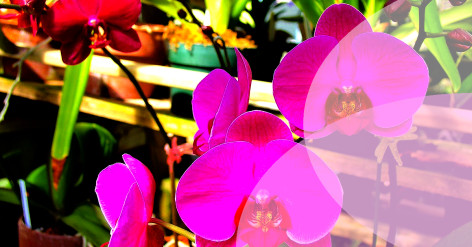How to Attract Hummingbirds to Your Garden

Hummingbird 101: Know What They're Looking For!
Hummingbirds, a garden's living jewel, are a breathtaking sight for anyone lucky enough to spot them. But how do you turn your garden from a mere patch of greenery into a hummingbird haven? We've got some tips and tricks to share. Your heavy dash of creativity and our recommendations combined can make your everyday garden turn into a vibrant hummingbird playground.
Create a Garden that is a Hummingbird Buffet
Before you set up a banquet for your feathered guests, it's imperative to understand their gastronomical preferences. A hummingbird's diet mostly revolves around nectar owing to their high metabolism. They are also known for feasting on spiders and other small insects. So, how do we leverage this information?
Sugar-Water Feeders - A Hummingbird Café
Related articles
Hummingbirds are naturally attracted to brightly colored, tubular flowers which store plentiful nectar. Planting these in your garden can be a sure-fire way of drawing in these stunning avians. Some hummingbird-friendly plants include trumpet creepers, fuschias, and bee balms. It's worthwhile to research and identify local plants that are both indigenous to your region and loved by the hummingbirds.
Tips:
- Vary plant heights: Like a bird buffet, make sure your garden catering to all your guests, low-flyers and high-diners alike.
- Flowering times: To ensure that your garden is hummingbird-attractive all year round, choose a mixture of plants with different blooming cycles.
Respecting Hummingbird Etiquettes
While natural nectar is always best, having a sugar-water feeder will ensure a regular supply. Plus, its vibrant color can attract hummingbirds from afar. Ensure the feeder is clean and the sugar solution is changed regularly to maintain hygiene. Never use honey, artificial sweeteners, or red dye in the feeders as they can be harmful. Here are some feeder suggestions.
In the End, It's All Worth It
Creating a safe and inviting environment is as important as the food you provide. Here are a few additional considerations:
- Watch the windows: Hummingbirds can mistake window reflections for more space or plants, leading to collisions. Break up reflections with decals or curtains.
- Create perching spaces: These high-energy creatures need places to rest and look out. Providing natural perching spaces like shrubs and trees will make them feel right at home.
- Water sources: These avian beauties enjoy a good bath. Incorporating a water mister or fountain in your garden will be much appreciated.
While it might take some time for hummingbirds to find your garden, donât be discouraged. Continue maintaining your beautiful, bird-friendly space, and you will be rewarded. Once hummingbirds discover your garden, they will likely return season after season, adding a delightful and lively vibrance to your green sanctuary. Let's not forget the ecological benefit by support the stunning little creatures that immensely contribute to the job of pollinating.
Ultimately, attracting and observing these tiny wonders gives you a ringside seat to one of nature's most magical phenomenons. Seize that opportunity, and bring the enchanted world of hummingbirds into your garden.





